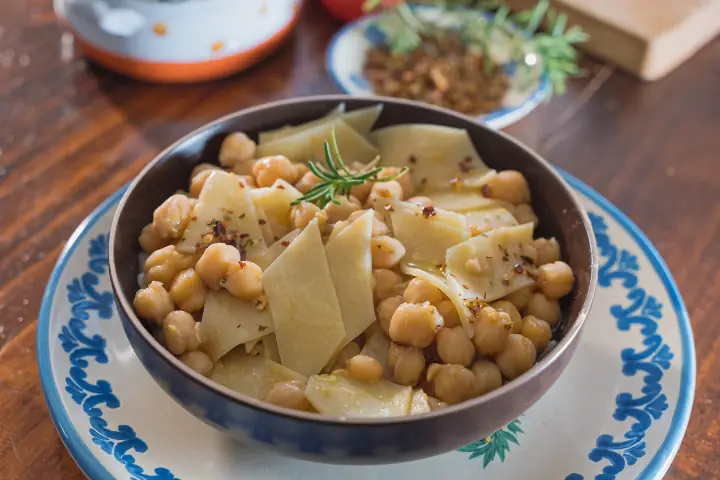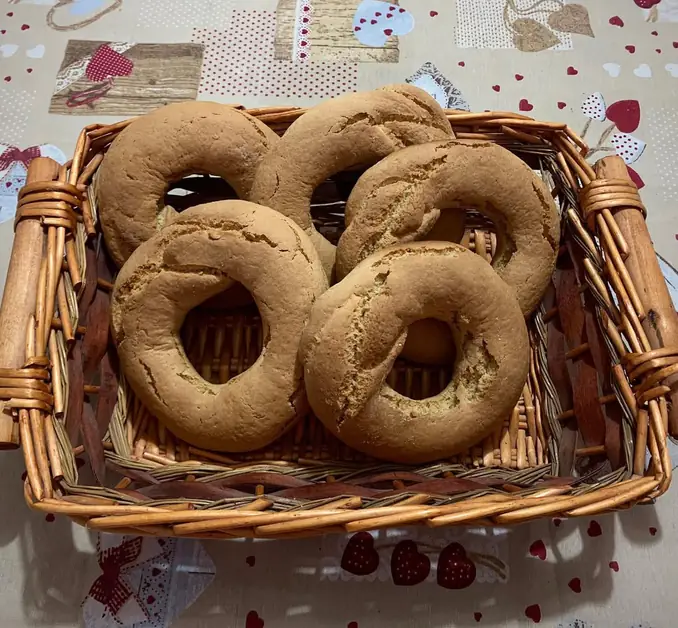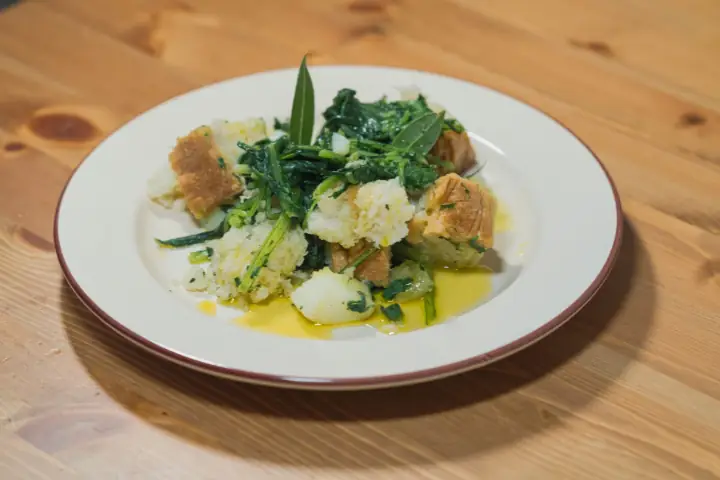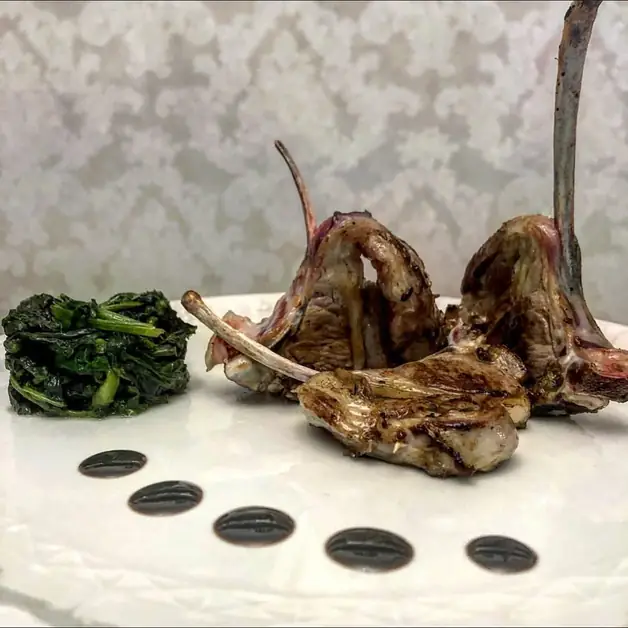Lagane and Ceci a traditional Mediterranean dish
Lagane and Ceci a traditional Mediterranean dish that tells stories of simplicity and authentic flavors.

What are Lagane and what is their origin?
Lagane are an ancient type of fresh pasta made only with flour and water, without eggs. Their origin dates back to the ancient Greek world, where the word "laganon" referred to a dough of flour and water roasted on hot stone, then cut into strips and served with legumes or cereals. This tradition has survived to Magna Graecia and then to Rome, where Latin poets and gastronomes also spoke of this dish.
How do Lagane differ from Tagliatelle and Lasagna?
Lagane are wider than tagliatelle but narrower than lasagna. They have a thick dough, about 3 millimeters, and a rustic texture that makes them ideal for country dishes and soups. They are perfect for holding the sauce, especially if it involves legumes like chickpeas or beans.
Who are Horace and Apicius and why are they linked to Lagane?
The Latin poet Horace, originally from the Vulture area, mentioned in his Satires a simple yet delicious dinner of lagane, chickpeas, and leeks. Apicius, the famous gastronomer of ancient Rome, also mentions lagane in his treatise De re coquinaria as sheets of pasta seasoned with meat or garum, a precursor to our modern lasagna. This demonstrates how lagane have a millennia-old history, loved by the peoples of the Mediterranean.
Where can Lagane still be found in Italian tradition today?
Lagane survive mainly in Southern Italy, in regions such as Campania, Basilicata, and Puglia. In Cilento, for example, they are the stars of dishes like lagani e ciciari (lagane and chickpeas) or lagani e fasuoli (lagane and beans), also known as lamp’ e tuon’ in dialect. In Puglia, especially in Salento, they are boiled and added to soups, or fried in hot oil to become crispy and golden.
How are traditional Lagane prepared?
To prepare lagane, only a few simple ingredients are needed: flour 00, durum wheat semolina, warm water, and a pinch of salt. The dough is kneaded until elastic, left to rest for half an hour, and then rolled out with a rolling pin. The dough should be about 3 mm thick and cut into strips 3-4 cm wide. Lagane can be boiled or fried, depending on the recipe.
What ingredients are needed to prepare Lagane and Ceci?
For 2 or 3 people, you will need: For the lagane: 75 g of flour 00 75 g of durum wheat semolina warm water seed oil for frying For the chickpeas: 250 g of already cooked chickpeas (keeping their water) extra virgin olive oil 1 clove of garlic 2 bay leaves 1 dried chili 1 anchovy in oil half a glass of white wine
How are Lagane kneaded and cut?
The two flours are mixed with a pinch of salt, adding warm water until a dry but elastic dough is obtained. After letting it rest, it is rolled out with a rolling pin until a not too thin sheet is achieved. It is rolled up and cut into wide strips, like thick tagliatelle. Half of the lagane will be boiled, while the other half will be fried for a crunchy touch.
How are the Chickpeas prepared to accompany the Lagane?
In a saucepan, heat extra virgin olive oil with garlic, chili, and anchovy, allowing it to flavor slightly. Then add the already cooked chickpeas and deglaze with a bit of white wine and the cooking water from the chickpeas. Add the bay leaves and let it cook on low heat for a few minutes until the chickpeas soften and flavor.
Why are some Lagane fried?
Frying some strips of lagane is a little secret of traditional Apulian cuisine. When immersed in hot oil, the lagane puff up and become golden, achieving a crispy and irresistible texture. These fried lagane are served alongside the dish, adding a note of contrast and crunchiness.
How are Lagane and Ceci combined for the final dish?
When the chickpeas are ready, enough water is added to cook the lagane. Once boiling, the strips of pasta are added and left to boil until al dente. A portion of the chickpeas is blended to obtain a soft cream, which is added at the end to make the soup denser and creamier. Finally, it is served with a drizzle of raw oil and the fried lagane on top.
What is the secret to the goodness of Lagane and Ceci?
The secret lies in simplicity. A few genuine ingredients, slow cooking, and respect for tradition. The aroma of garlic and chili, combined with the softness of the chickpeas and the texture of the handmade pasta, create a rustic yet elegant dish, perfect for cold days.
Are Lagane and Ceci a poor or refined dish?
Originally, it was a poor dish, born in peasant homes, but today it is considered a symbol of authentic Mediterranean cuisine. Many restaurants in Southern Italy offer it on their menus, especially in winter. Its simplicity is the key to its charm.
What is the connection between Lagane and Mediterranean cuisine?
Lagane are one of the first examples of Mediterranean pasta: flour, water, and legumes. This combination represents the basis of the healthy and balanced diet of Southern Italy. Lagane and ceci tell a way of life made of sharing and local ingredients.
Where can you taste Lagane and Ceci in Italy?
You can enjoy lagane and ceci in many taverns and trattorias in the South, especially in Campania, Basilicata, and Puglia. In Salento, it is a typical dish of country houses and winter festivals. During legume festivals, it is often one of the most loved preparations by tourists.
How are Lagane and Ceci served?
The dish is served hot and steaming, with a drizzle of extra virgin olive oil raw and, if desired, a pinch of black pepper. The fried lagane are placed on top or alongside the plate, creating a contrast of textures that captivates at first bite.
Why are Lagane and Ceci perfect for tourists visiting Southern Italy?
Because they represent a journey through history and tradition. Those who visit Puglia or Campania and taste this dish discover an authentic flavor made of simplicity and memory. Lagane and ceci are not just food, but a tale of hospitality and Mediterranean culture.
Can Lagane and Ceci also be prepared at home?
Yes, it is an easy dish to make at home. No pasta machine is needed, just a bit of patience and genuine ingredients. Kneading, cutting, and cooking the lagane is an ancient gesture that brings to mind the aromas and flavors of kitchens of the past.


